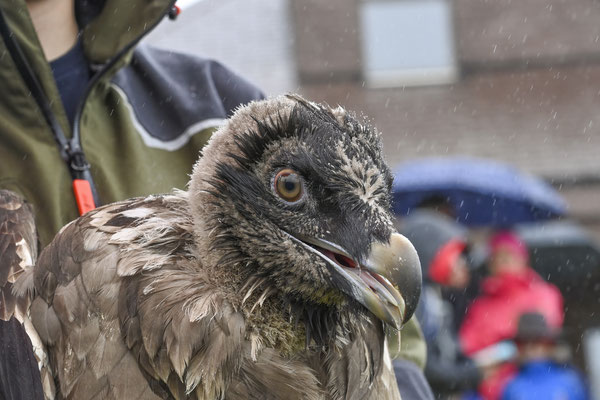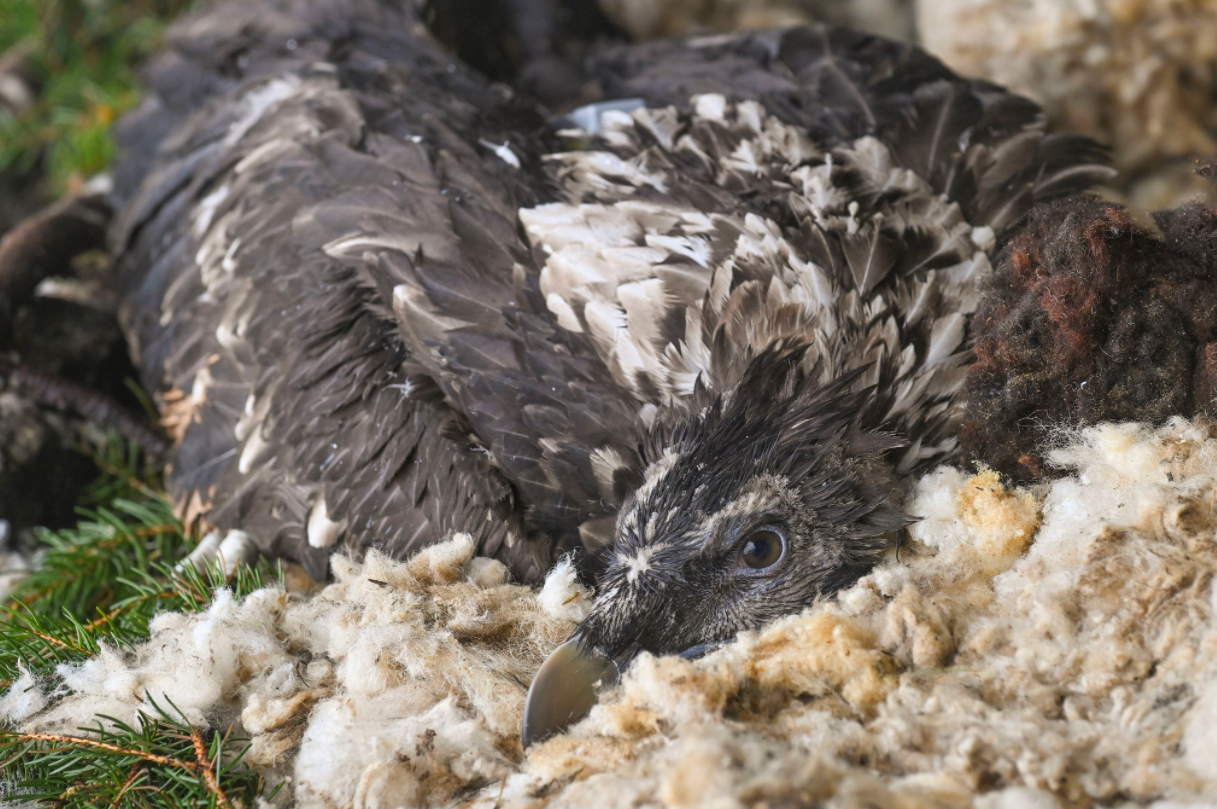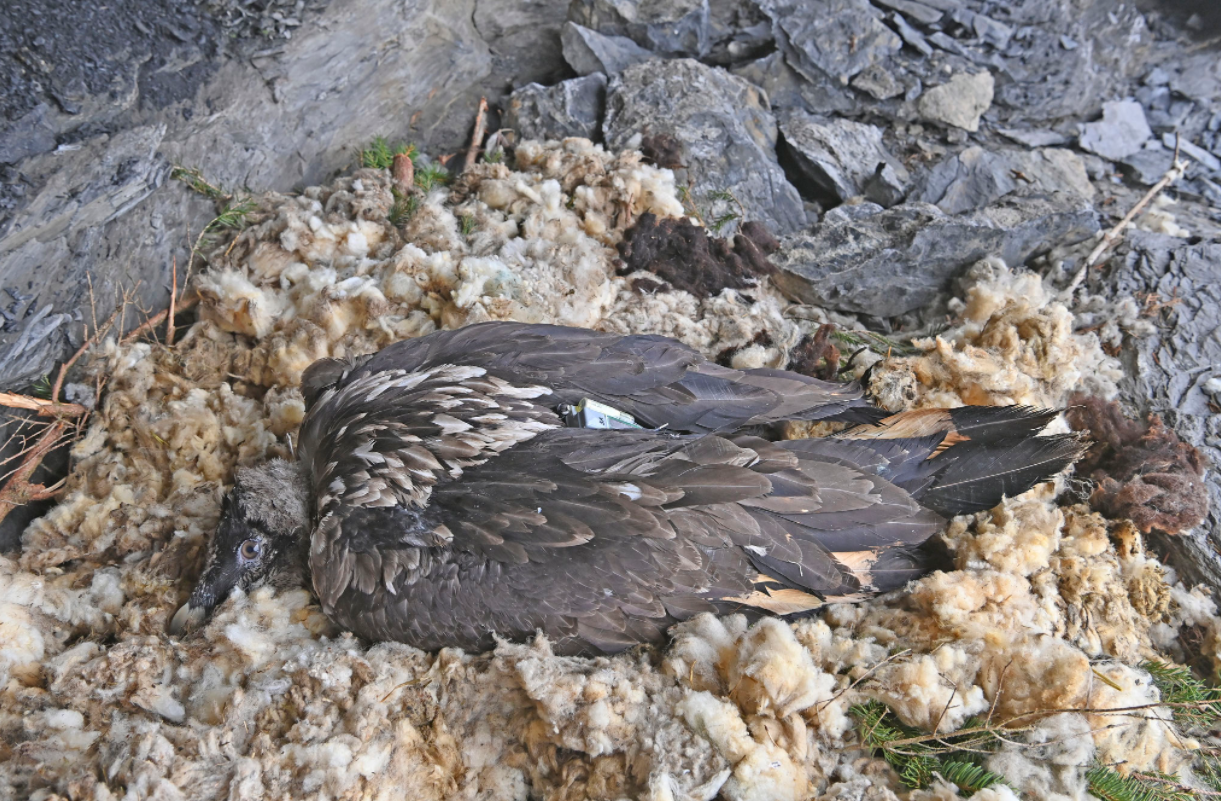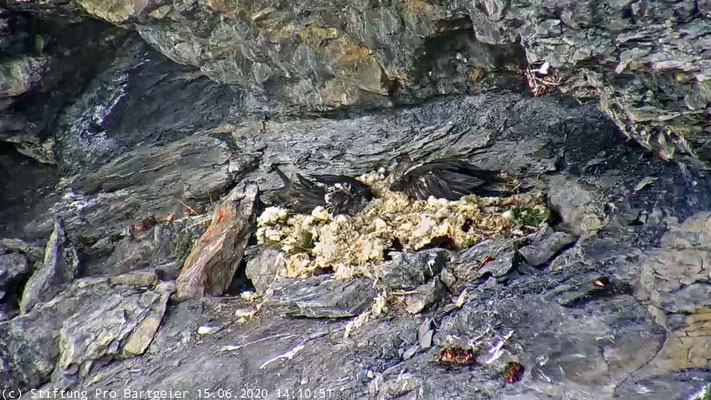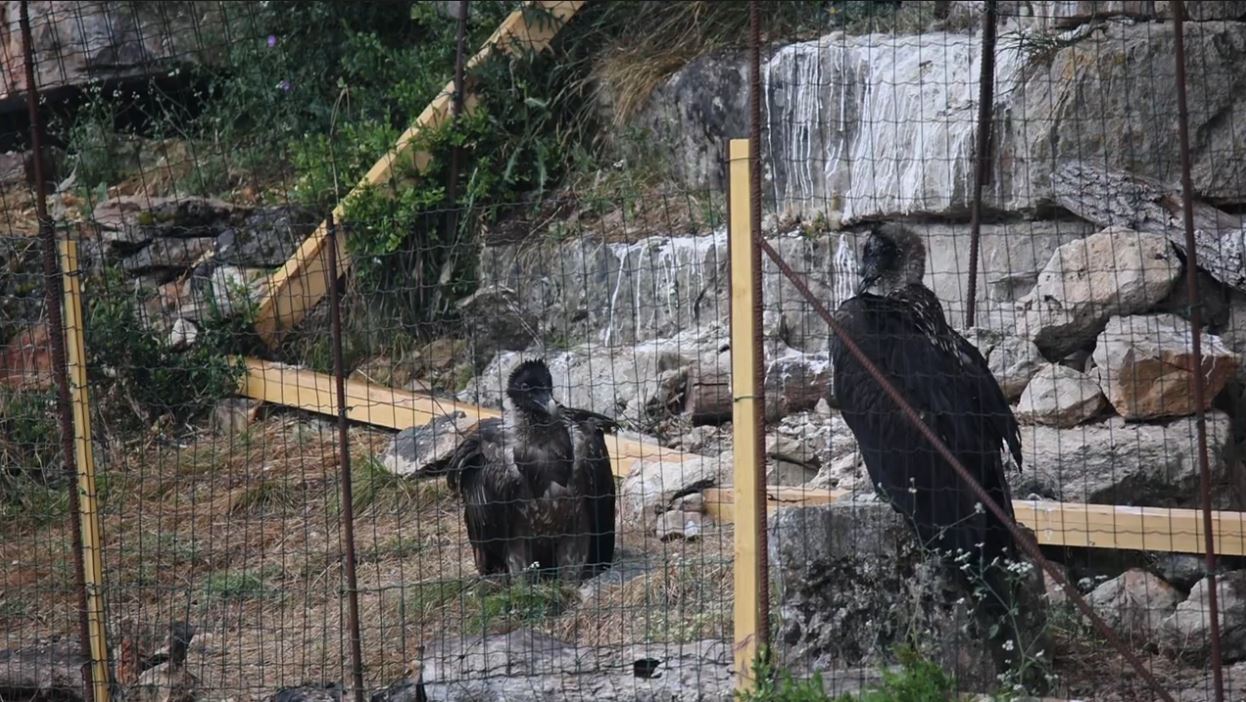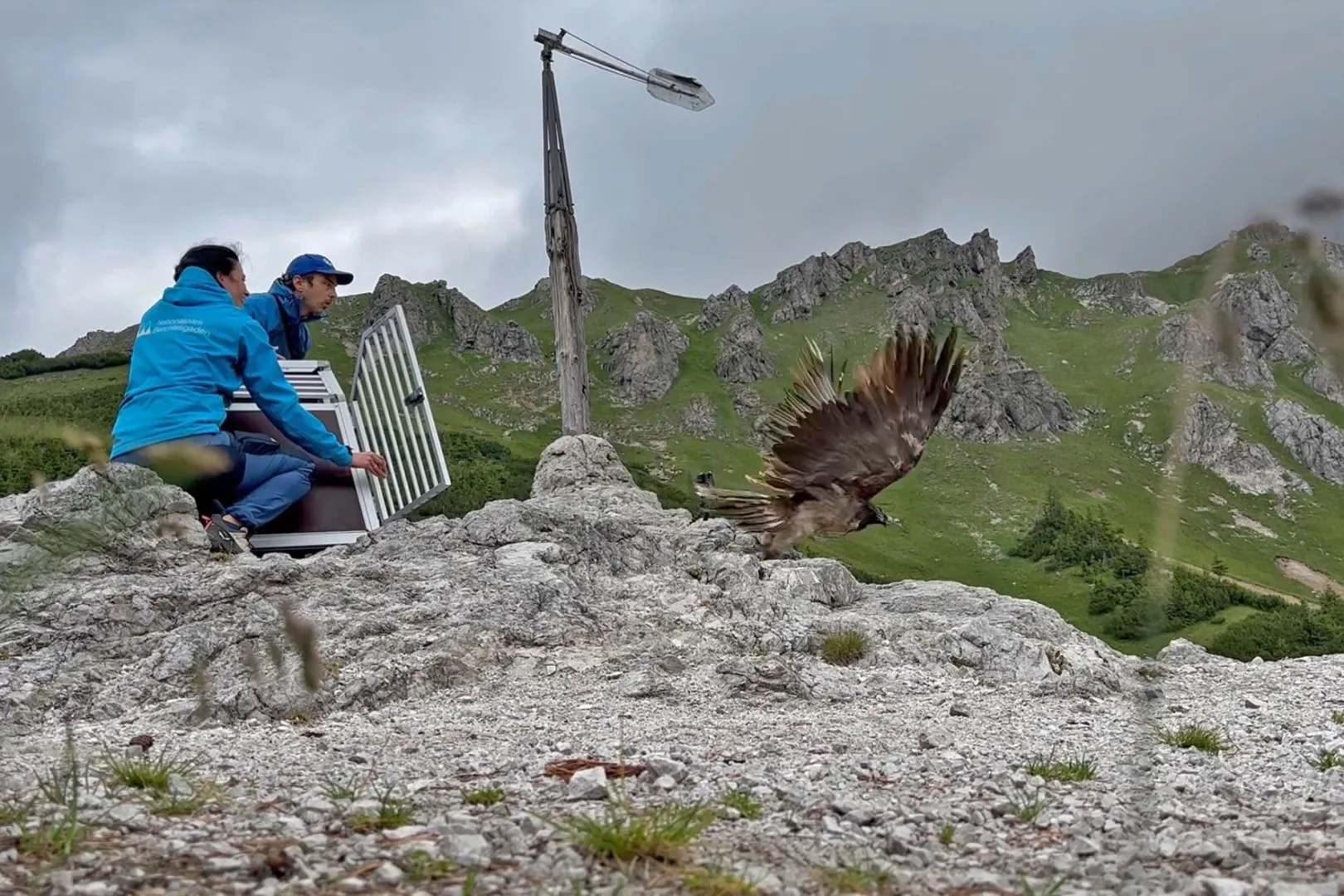
Two captive-bred Bearded Vultures that hatched in Spain have a new home in the Swiss Alps! In mid-June, these birds were released at the Swiss Wildlife Reserve Huetstock near Melchsee-Frutt in Switzerland.
Meet Fortunat and Luzerna
Fortunat and Luzerna travelled a long way from Spain to arrive at their new home in Switzerland. Fornutat hatched in the Centre de Recuperació de Fauna Salvatge de Torreferrussa in Barcelona and Luzerna hatched in the Bearded Vulture Captive Breeding centre of Guadalentín in Cazorla. Both centres are part of the Vulture Conservation Foundation’s (VCF) Bearded Vulture Captive Breeding Network (EEP) that breeds the species in captivity for conservation purposes. The VCF also manages Guadalentín following an agreement with the Junta de Andalucía.
Luzerna and Fortunat bring new blood to the Bearded Vulture population in the Alps, as both of them have ancestors from the Bearded Vulture population in the Pyrenees. This is important so that the small population gets the greatest possible genetic diversity and so that the risk of inbreeding issues in future generations is minimised.
Ahead of the release, the team equipped the birds with GPS tags and bleached their feathers for monitoring and identification purposes.
Releasing two Bearded Vultures to the Swiss Alps
On 14 June, Stiftung Pro Bartgeier released the two captive-bred Bearded Vultures at the hacking nest near Melchsee-Frutt. The VCF and its partners release Bearded Vultures using the ‘hacking method’, which is more or less the natural way of fledging. This method involves releasing chicks that hatched in captivity at an artificial nest in a suitable habitat to acclimatize to the natural environment before they take their first flights. With this technique, the nestlings are able to associate the place where they are released with the area of hatching so that when they reach breeding age, which is around 8-10 years old, they select these places to breed. When Bearded Vultures are young, they tend to travel vast distances and explore new regions, but once they become sexually mature, they tend to select areas close to where they hatched to breed.
The team of Stiftung Pro Bartgeier will monitor and feed the released birds without human contact until they fledge. A big thank you to Swarovski Optik for lending the project the necessary equipment to support the monitoring efforts.
So far, the birds seem to be very friendly with one another, feeding next to each other and often resting in the same nest. You can now watch how the vultures are adapting to their new home via the live webcam and learn their latest news on Bartgeier’s blog.
If you are nearby, you can visit the information stand to observe the birds in their new home.
Update 12/07/2020

On Saturday, Fortunat put himself in a rather awkward position. In the evening, he hopped over the fence and could no longer return to the hacking site, so he had no choice but to fly. He took his first flight on Sunday 12 July at 1:08 p.m., landed nearby, taking a break of almost half an hour before, much to our surprise, he flew again. But that was not all. Fortunat flew a total of 7 times and spent more than 3 minutes in the air. The fact that a Bearded Vulture flies this many times on the day of the first flight is rather unusual. It is also not common that Fortunat, a male, only flew for the first time when he was 123 days old. But, at least, he can now start exploring his new home in the wild!
Update 14/07/2020

Luzerna fledged at 124 days old today, which is a typical age for the first flight of female Bearded Vultures.
In the morning of 14 July, Luzerna made her first flight. Before she took off, Luzerna did some flight exercises, then flew for about 10 seconds and landed safely again. After the first landing, Luzerna climbed a bit into the rocks, which seems to be a normal instinct to gain height maybe or feel more secure. Shortly after, she made a second short flight and landed directly in a rock face and then climbed to a larger rocky outcrop. Then, someone joined her — her old ‘roommate’, Fortunat, landed next to Luzerna. The two young vultures had not seen each other since the first flight of Fortunat a couple of days ago and then sat next to each other again for a long time.
Bearded Vultures in Switzerland
The Bearded Vulture population in Switzerland is growing. Since 2015, the releases in Switzerland take place in Central Switzerland and are mainly targeted to increase the genetic diversity of the Alpine population.
In the Alps the wild population of Bearded Vultures are breeding well since the Alps reintroduction project began in 1986, with a sustainable demographic growth. Indeed the reintroductions could stop, if mortality does not increase by more than 1 bird per year, however, the genetic composition of the Alpine reintroduced population is still too small to avoid inbreeding in the long term.
All the birds reintroduced being originated from a small number of captive founder birds, the releases in the Alps are still continuing mostly to boost the genetic diversity – individuals released there are chosen to include rare genetic lines. As the chance to recruit into the breeding population is biggest in the central Alps, these rarer genetic types are released into the Swiss Alps. While the wild population is growing in the mountains of Grisons and Valais, Bearded Vultures are less common in Central Switzerland, so the recent release sites have been there.
So far, we released eleven Bearded Vultures near Melchsee-Frutt; three in 2015, two each in 2016, 2017, 2018 and 2020.
Stay tuned with Bearded Vulture releases
This breeding season, a total of 25 Bearded Vulture chicks are alive and healthy within the Vulture Conservation Foundation’s (VCF) Bearded Vulture Captive Breeding Network (EEP) that breed the species in captivity for conservation purposes. The VCF and its partners will release at least 21 young Bearded Vultures into the wild across six regions in Spain, France and the Alps to boost the local populations of the species, with the first releases of the season taking place in Andalusia, Spain, on 9 May 2020. Some of the birds that hatched will remain in captivity to address the sex-ratio imbalances and also to secure important bloodlines in the captive stock. One more release will take place in July.
Stay tuned with the releases by following #BeardedVultureReleaseSeason on Facebook, Twitter, LinkedIn and Instagram!


